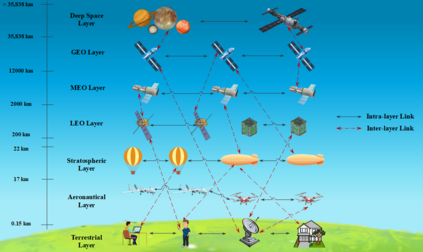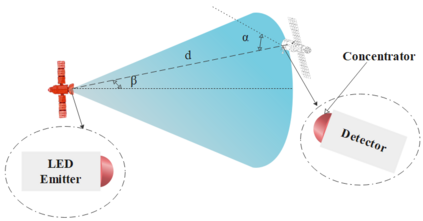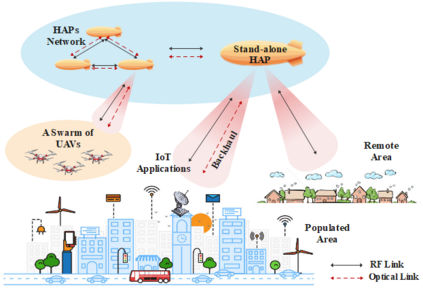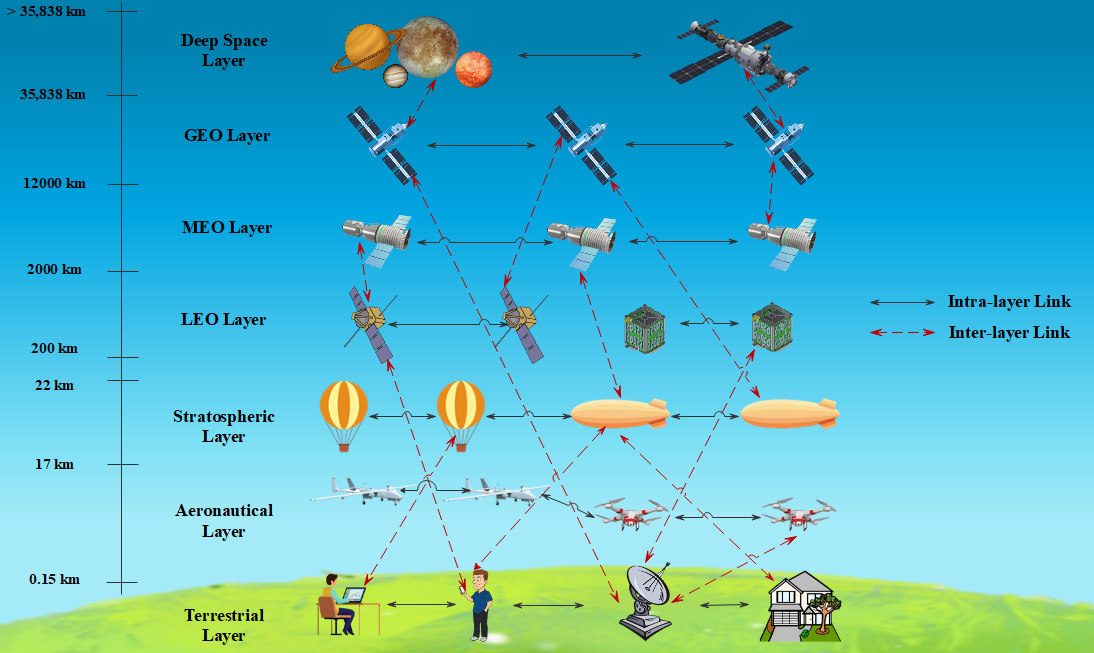This paper overviews point-to-point (P2P) links for integrated satellite-aerial networks, which are envisioned to be among the key enablers of the sixth-generation (6G) of wireless networks vision. The paper first outlines the unique characteristics of such integrated large-scale complex networks, often denoted by spatial networks, and focuses on two particular space-air infrastructures, namely, satellites networks and high-altitude platforms (HAPs). The paper then classifies the connecting P2P communications links as satellite-to-satellite links at the same layer (SSLL), satellite-to-satellite links at different layers (SSLD), and HAP-to-HAP links (HHL). The paper overviews each layer of such spatial networks separately, and highlights the possible natures of the connecting links (i.e., radio-frequency or free-space optics) with a dedicated overview to the existing link-budget results. The paper, afterwards, presents the prospective merit of realizing such an integrated satellite-HAP network towards providing broadband services in under-served and remote areas. Finally, the paper sheds light on several future research directions in the context of spatial networks, namely large-scale network optimization, intelligent offloading, smart platforms, energy efficiency, multiple access schemes, and distributed spatial networks.
翻译:本文概述了无线网络第六代(6G)的关键推动者之一,即综合卫星-航空网络的点对点连接(P2P),预计这些联系是无线网络第六代(6G)的关键推动者之一,首先概述了这类综合大型复杂网络的独特性,通常以空间网络为标志,并侧重于两个特定的空间-空气基础设施,即卫星网络和高纬度平台(HAPs),然后将连接的P2P通信连接归类为同一层的卫星-卫星连接(SSLL)、不同层次的卫星-卫星连接(SSLD)和HAP-HAP链接(HHL),论文分别概述了这类空间网络的每个层次,并着重介绍了连接(即无线电-频率或自由空间光学)的可能性质,并专门概述了现有的链接预算结果。随后,论文介绍了实现这种综合卫星-卫星-卫星通信网络在服务不足和偏远地区提供宽带服务的潜在好处。最后,论文展示了未来智能空间网络、大规模空间访问网络的智能化、多层空间访问网的智能化、离载式网络的智能化、高载式空间网络、离层网络。








